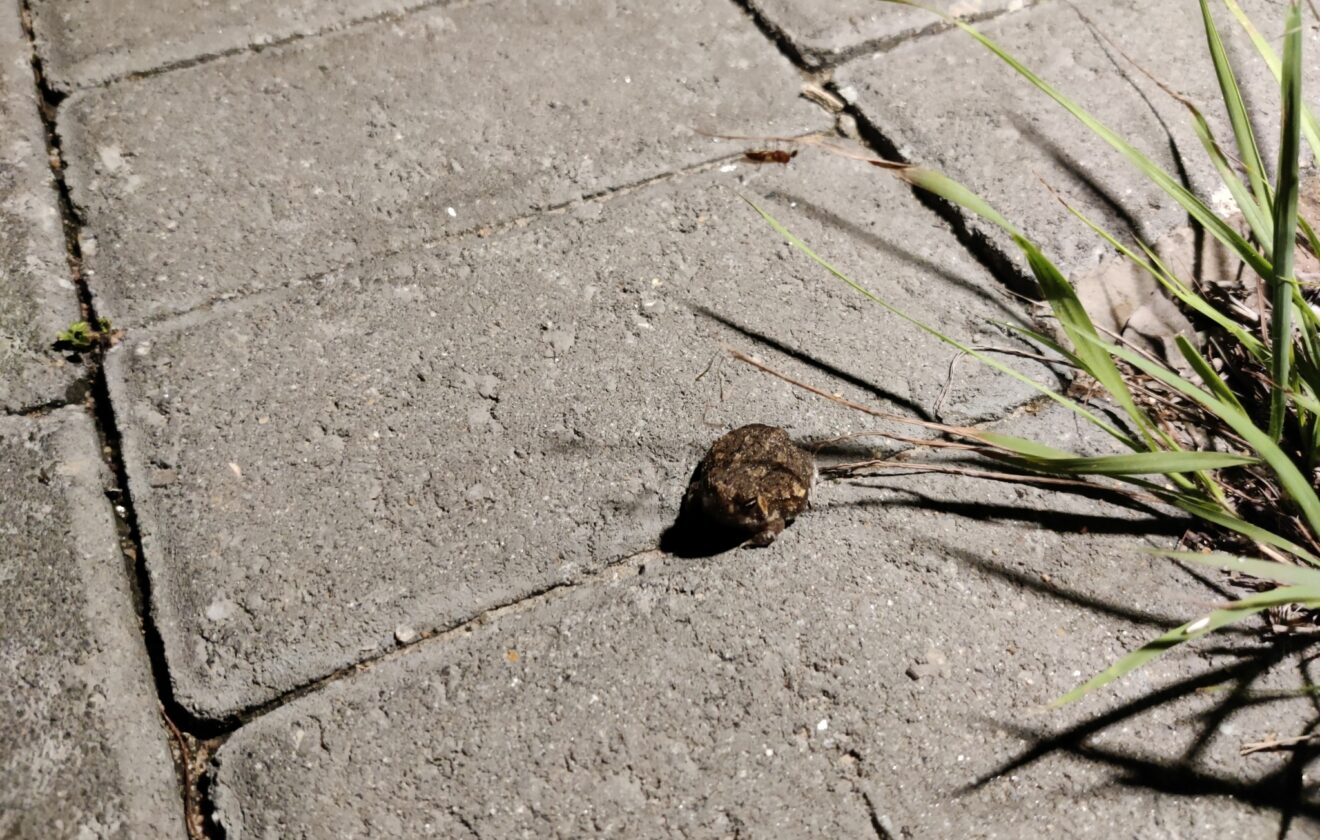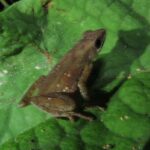- Introduction: Discovering Breviceps passmorei
- Taxonomy and Classification: Placing Breviceps passmorei in Context
- Natural Habitat: The Secretive World Beneath the Leaves
- Physical Characteristics: Designed for Subterranean Mysteries
- Behavior and Life Cycle: A Life Led Quietly Underground
- Ecological Role: A Vital Player Within the Leaf Litter Carnival
- Threats and Conservation Status: Protecting a Hidden Guardian of Forest Health
- Cultural and Scientific Significance: Celebrating Breviceps passmorei
- Conclusion: A Call to Treasure Passmore's Rain Frog
Introduction: Discovering Breviceps passmorei#
Hidden deep beneath the shady canopy of southern Africa’s lush, moist forests exists a creature whose curious appearance seldom fails to enchant those fortunate enough to encounter it. Breviceps passmorei, better known as Passmore’s Rain Frog, is a small amphibian whose charm belies its ecological importance. Unusual in its shape, behavior, and survival strategies, this intriguing frog species thrives in a habitat of dense leaf litter and underground chambers, rarely seen but always fascinating to naturalists.
Its plump body, seemingly perpetually inflated, and its peculiar habit of puffing itself up when threatened makes Passmore’s Rain Frog an unforgettable sight—capturing the imagination of nature enthusiasts and scientists alike. Yet, beyond its endearing looks lies a story entwined with fragile ecosystems, delicate ecological relationships, and ongoing conservation concerns that call for our thoughtful attention.
Taxonomy and Classification: Placing Breviceps passmorei in Context#
Passmore’s Rain Frog belongs to the genus Breviceps, a group within the family Brevicipitidae, renowned for its highly specialized burrowing and terrestrial species. Officially described as recently as 2017, Breviceps passmorei honors the eminent herpetologist Neville Passmore, whose lifelong dedication to the study of African amphibians significantly advanced our understanding of the continent’s biodiversity.
Closely related to other Breviceps species—such as the Desert Rain Frog (Breviceps macrops)—Passmore’s Rain Frog shares key anatomical and behavioral adaptations that allow it to thrive far from permanent water bodies. Its relatives within this genus highlight a fascinating evolutionary journey marked by underground adaptation, cryptic behavior, and unique breeding strategies tailored perfectly to their challenging environments.
Natural Habitat: The Secretive World Beneath the Leaves#
Breviceps passmorei occupies a distinct niche within moist, lowland forest ecosystems of southern Africa, notably in regions of eastern South Africa and eastern Zimbabwe. Unlike many traditional frogs bound to streams and ponds, this adaptable creature thrives in leaf litter-rich forest floors, sheltered beneath fallen logs, mossy stones, and decomposing vegetation. This subterranean lifestyle creates intimate, hidden interactions with its environment, far removed from the prying eyes of casual observers.
In such environments, moisture retention is paramount. Thus, the species selects habitats maintained naturally humid by dense canopy coverage, regular rainfall, and organic decomposition. Gentle slopes, shaded gullies, and forest patches with thick layers of leaf mulch provide optimal moisture and shelter conditions. Each burrow becomes an integral part of the broader ecology—tiny subterranean shelters interconnecting root systems and fungal networks beneath Earth’s surface.
Physical Characteristics: Designed for Subterranean Mysteries#
Distinctive in appearance, Passmore’s Rain Frog boasts a round, stout physique rarely exceeding 30-40 millimeters in length. Its compact, globular body shape, short legs, and tiny feet set it apart significantly from conventional frog anatomy, clearly illustrating evolutionary specialization to underground living. Its skin, rough-textured and covered in tiny bumps, displays coloration varying from muted browns to earthy grays—perfectly camouflaged among decomposing leaf litter and soil particles.
One notably comical but crucial defensive trait is the frog’s ability to inflate its body rapidly. When threatened by a potential predator, it balloons dramatically, becoming substantially larger—a clever strategy that complicates attempts at capture. Coupled with camouflage coloring, it serves as a notable deterrent against birds, reptiles, and small mammals.
Behavior and Life Cycle: A Life Led Quietly Underground#
Feeding Habits#
The Passmore’s Rain Frog is primarily insectivorous, feeding on an array of small arthropods abundant in its habitat. Ants, termites, mites, tiny spiders, beetle larvae, and various other ground-dwelling invertebrates constitute the bulk of its diet. Hunting and feeding mostly occur under cover of darkness in brief excursions above ground or beneath leaf litter layers, in tunnels probing rich underground microhabitats bustling with insect activity.
Breeding Rituals and Vocalizations#
Unlike typical frogs, which congregate around water bodies, Passmore’s Rain Frog employs a distinctly terrestrial reproductive strategy. The male attracts potential mates through soft, high-pitched, whistling calls—plaintive notes barely audible to human ears, resonating faintly from beneath layers of soil and damp leaf litter in rainy seasons.
The courtship is intimate and unusual, employing a direct form of amplexus adapted to terrestrial conditions. Females lay clusters of a few large, yolk-rich eggs buried in subterranean nests. Remarkably, rather than emerging as aquatic tadpoles, young rain frogs undergo direct development, emerging fully formed as miniature versions of their parents—a critical adaptation for life beyond standing water.
Ecological Role: A Vital Player Within the Leaf Litter Carnival#
Though seldom observed, the ecological significance of Passmore’s Rain Frog is substantial. Acting as critical controllers of insect populations, these amphibians help maintain balance in forest ecosystems, managing populations of ants, termites, and other small arthropods. Concurrently, they serve as prey for numerous forest floor predators, including snakes, small mammals, and ground-foraging birds, positioning them firmly within a complex web of predator-prey interactions.
Moreover, their unique habitat requirements and sensitivity to environmental change qualify them as excellent indicators of ecosystem health. Where Breviceps passmorei flourishes, forest systems typically exhibit effective nutrient cycling, abundant invertebrate populations, and sustainable moisture retention, offering scientists crucial insights into overall habitat integrity.
Threats and Conservation Status: Protecting a Hidden Guardian of Forest Health#
Despite its intriguing lifestyle and ecological value, Passmore’s Rain Frog faces an uncertain future. Habitat destruction through deforestation, agricultural expansion, urban development, and infrastructure projects significantly threaten its delicate forest home. Additional pressures emerge from climate change, altering rainfall patterns and humidity levels and potentially disrupting the moisture-dependent microhabitats these frogs rely upon.
Currently listed by the IUCN as “Least Concern,” primarily due to relatively wide distribution and presumed stable populations, ongoing habitat fragmentation and local ecological disturbances strongly suggest vigilance and continued monitoring is necessary. Conservationists urge protective measures, recognizing the importance of preserving forest patches, monitoring population trends, and preventing further habitat degradation to secure a healthy conservation outlook for this species.
Cultural and Scientific Significance: Celebrating Breviceps passmorei#
Passmore’s Rain Frog remains relatively obscure to broader culture; however, local communities and indigenous peoples of southern Africa have long inhabited lands sharing ecosystems with these subterranean amphibians. Such species may inform traditional ecological knowledge, guiding local understanding of seasonal cycles, weather conditions, and biodiversity indicators important for land management.
Scientifically, the remarkable adaptations of Breviceps passmorei offer valuable insights into evolutionary processes, physiology of amphibian skin permeability, moisture conservation strategies, and reproductive biology without dependence on standing water—areas rich for research exploration.
Conclusion: A Call to Treasure Passmore’s Rain Frog#
Hidden beneath the decomposing leaves and soft, dark soils of Africa’s forests, Passmore’s Rain Frog weaves a narrative of adaptation, resilience, and ecological harmony. Its understated yet critical role as both predator and prey, coupled with profound adaptations developed over millennia, embodies nature’s ability to shape life perfectly to ecological niches.
As stewards of the planet, understanding and appreciating this remarkable frog species invigorates our broader commitment to forest conservation. Supporting local and global efforts toward habitat protection, engaging in citizen science projects to map and study elusive amphibians, and advocating mindful policies safeguard both Breviceps passmorei and countless other unseen yet invaluable forest species. After all, the fate of this tiny creature tucked away amid damp earth mirrors our broader journey toward coexistence, balance, and conservation responsibility.















